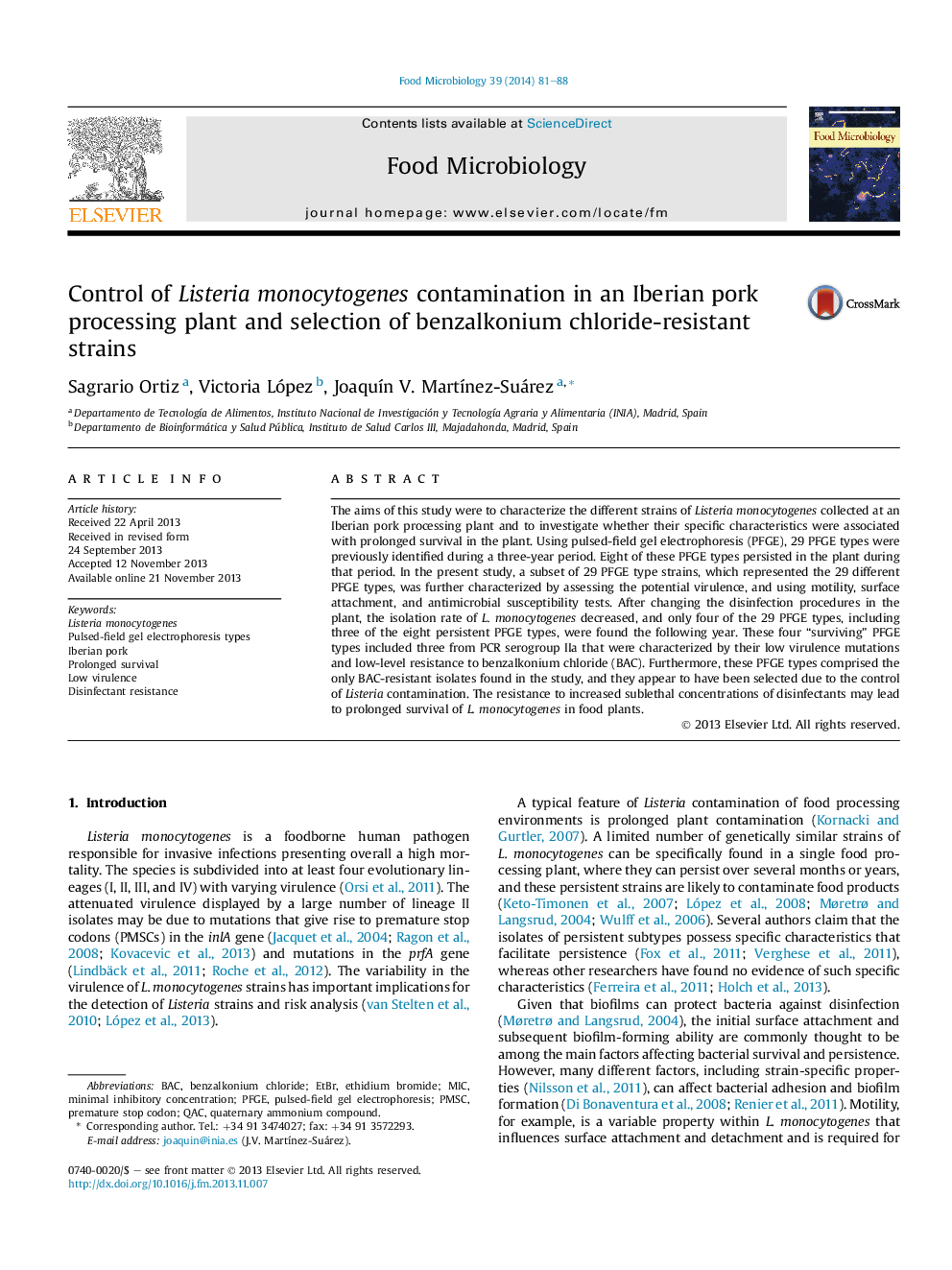| Article ID | Journal | Published Year | Pages | File Type |
|---|---|---|---|---|
| 6288737 | Food Microbiology | 2014 | 8 Pages |
â¢The control of Listeria was associated with the survival of a reduced number of strains.â¢The surviving strains included some that were previously identified as persistent.â¢The surviving strains included a significant number of mutants with a low potential virulence.â¢The surviving strains included the only disinfectant-resistant strains found in the study.
The aims of this study were to characterize the different strains of Listeria monocytogenes collected at an Iberian pork processing plant and to investigate whether their specific characteristics were associated with prolonged survival in the plant. Using pulsed-field gel electrophoresis (PFGE), 29 PFGE types were previously identified during a three-year period. Eight of these PFGE types persisted in the plant during that period. In the present study, a subset of 29 PFGE type strains, which represented the 29 different PFGE types, was further characterized by assessing the potential virulence, and using motility, surface attachment, and antimicrobial susceptibility tests. After changing the disinfection procedures in the plant, the isolation rate of L. monocytogenes decreased, and only four of the 29 PFGE types, including three of the eight persistent PFGE types, were found the following year. These four “surviving” PFGE types included three from PCR serogroup IIa that were characterized by their low virulence mutations and low-level resistance to benzalkonium chloride (BAC). Furthermore, these PFGE types comprised the only BAC-resistant isolates found in the study, and they appear to have been selected due to the control of Listeria contamination. The resistance to increased sublethal concentrations of disinfectants may lead to prolonged survival of L. monocytogenes in food plants.
